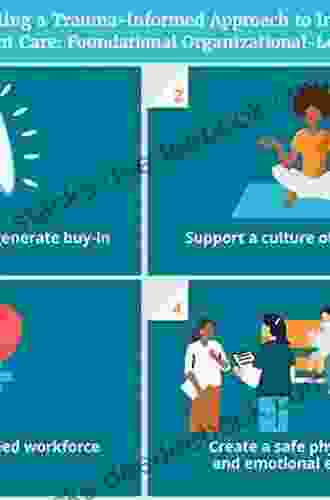Techniques for Clinical Practice: A Comprehensive Guide to Enhancing Patient Outcomes

The field of clinical practice is constantly evolving, with new techniques and advancements emerging to improve patient care and optimize health outcomes. Healthcare professionals are tasked with staying abreast of these advancements to provide the most effective and up-to-date care to their patients. This article serves as a comprehensive guide to some of the most important techniques for clinical practice, offering insights into their benefits, applications, and implications for patient care.
5 out of 5
| Language | : | English |
| File size | : | 4062 KB |
| Text-to-Speech | : | Enabled |
| Screen Reader | : | Supported |
| Enhanced typesetting | : | Enabled |
| Word Wise | : | Enabled |
| Print length | : | 33 pages |
Evidence-Based Practice
Evidence-based practice (EBP) is a cornerstone of modern clinical practice, emphasizing the use of scientific evidence to guide decision-making. By utilizing research findings and best practices, healthcare professionals can provide care that is supported by the highest level of evidence. EBP involves:
* Critically evaluating research literature * Appraising the strength of evidence * Integrating evidence into clinical practice * Regularly monitoring and evaluating outcomes
EBP empowers healthcare professionals to make informed decisions that are most likely to benefit patients, leading to improved health outcomes and reduced healthcare costs.
Holistic Approach to Care
A holistic approach to care considers the patient as a whole person, encompassing physical, mental, emotional, and social well-being. Healthcare professionals utilizing this technique seek to understand the interconnectedness of these aspects and provide comprehensive care that addresses the patient's overall health. The holistic approach emphasizes:
* Patient-centered care that respects individual values and preferences * Collaboration with other professionals (e.g., social workers, psychologists) * Addressing social determinants of health (e.g., housing, education) * Providing support and resources for mental and emotional health
By adopting a holistic approach, healthcare professionals can improve patient satisfaction, promote well-being, and prevent chronic conditions.
Interprofessional Collaboration
Interprofessional collaboration involves healthcare professionals from different disciplines working together to provide patient care. This collaborative approach fosters communication, coordination, and shared decision-making, leading to improved patient outcomes. Key elements of interprofessional collaboration include:
* Establishing clear roles and responsibilities * Developing effective communication channels * Respecting and valuing diverse perspectives * Engaging in team-based problem-solving
Interprofessional collaboration promotes seamless care transitions, reduces medical errors, and optimizes resource utilization, ultimately benefiting patients through better health outcomes.
Patient Engagement
Patient engagement is a crucial aspect of effective clinical practice, empowering patients to actively participate in their own healthcare decisions. By involving patients in the planning, delivery, and evaluation of their care, healthcare professionals can improve patient satisfaction, adherence, and health outcomes. Patient engagement involves:
* Providing clear and accessible information * Listening to patient perspectives and preferences * Encouraging shared decision-making * Collaborating with patients on goal-setting * Respecting patient autonomy
Engaging patients in their care fosters trust, promotes self-management, and empowers patients to take an active role in their health journey.
Technology in Healthcare
Technology is rapidly transforming clinical practice, offering innovative tools and resources to improve patient care. Healthcare professionals are increasingly using technology to:
* Access and share patient data * Communicate with patients and colleagues * Utilize artificial intelligence for diagnosis and treatment planning * Implement telemedicine for remote consultations
Technology can enhance efficiency, improve communication, and provide patients with greater access to care. However, it is essential to use technology responsibly and ensure that it complements, rather than replaces, human interaction.
Telemedicine
Telemedicine, also known as telehealth, involves delivering healthcare services remotely using technology. Through video conferencing, healthcare professionals can consult with patients, diagnose conditions, and provide treatment recommendations from a distance. Telemedicine offers several advantages:
* Improved access to care for patients in rural or underserved areas * Convenience and flexibility for patients with mobility issues * Reduced healthcare costs * Increased efficiency for healthcare professionals
Telemedicine allows healthcare professionals to provide timely and cost-effective care to patients who may otherwise have difficulty accessing healthcare services.
Personalized Medicine
Personalized medicine, also known as precision medicine, tailors medical treatments to the individual characteristics of each patient. By utilizing genetic information, lifestyle factors, and environmental data, healthcare professionals can develop personalized treatment plans that are more effective and less likely to cause side effects. Personalized medicine offers:
* Improved treatment outcomes * Reduced healthcare costs * Prevention of adverse reactions * Enhanced patient engagement
Personalized medicine is a rapidly growing field that has the potential to revolutionize healthcare by delivering more effective and individualized treatments.
Techniques for clinical practice are continuously evolving to improve patient care and optimize health outcomes. By adopting evidence-based practice, embracing a holistic approach, fostering interprofessional collaboration, engaging patients, leveraging technology, implementing telemedicine, and utilizing personalized medicine, healthcare professionals can enhance their practice and provide the highest level of care to their patients. Staying abreast of these techniques is essential for healthcare professionals to stay at the forefront of clinical practice and meet the evolving needs of patients in the 21st century.
5 out of 5
| Language | : | English |
| File size | : | 4062 KB |
| Text-to-Speech | : | Enabled |
| Screen Reader | : | Supported |
| Enhanced typesetting | : | Enabled |
| Word Wise | : | Enabled |
| Print length | : | 33 pages |
Do you want to contribute by writing guest posts on this blog?
Please contact us and send us a resume of previous articles that you have written.
 Novel
Novel Page
Page Reader
Reader Paperback
Paperback E-book
E-book Magazine
Magazine Bibliography
Bibliography Foreword
Foreword Preface
Preface Synopsis
Synopsis Footnote
Footnote Manuscript
Manuscript Scroll
Scroll Bestseller
Bestseller Classics
Classics Library card
Library card Narrative
Narrative Biography
Biography Autobiography
Autobiography Encyclopedia
Encyclopedia Dictionary
Dictionary Thesaurus
Thesaurus Narrator
Narrator Resolution
Resolution Borrowing
Borrowing Stacks
Stacks Periodicals
Periodicals Scholarly
Scholarly Lending
Lending Reserve
Reserve Academic
Academic Journals
Journals Rare Books
Rare Books Special Collections
Special Collections Interlibrary
Interlibrary Literacy
Literacy Thesis
Thesis Dissertation
Dissertation Storytelling
Storytelling Book Club
Book Club Yvon Marquis
Yvon Marquis Sarah Lark
Sarah Lark Amanda Haas
Amanda Haas Alex Prick
Alex Prick Joshua M Scacco
Joshua M Scacco Deborah Paredez
Deborah Paredez Horacio Salas
Horacio Salas Amber Sparks
Amber Sparks Adriana Locke
Adriana Locke Sam Mahon
Sam Mahon Philip Kazan
Philip Kazan Tom Zalaski
Tom Zalaski Larry Bennett
Larry Bennett Jonathan Wilson Hartgrove
Jonathan Wilson Hartgrove Michael Sack Elmaleh
Michael Sack Elmaleh Adrian Urban
Adrian Urban Daniel Davidson
Daniel Davidson Matthew Kroenig
Matthew Kroenig Ashley Farley
Ashley Farley Diane Greenwood Muir
Diane Greenwood Muir
Light bulbAdvertise smarter! Our strategic ad space ensures maximum exposure. Reserve your spot today!
 Pablo NerudaFollow ·14.8k
Pablo NerudaFollow ·14.8k August HayesFollow ·6.3k
August HayesFollow ·6.3k Kirk HayesFollow ·11.2k
Kirk HayesFollow ·11.2k John MiltonFollow ·15.7k
John MiltonFollow ·15.7k Chase SimmonsFollow ·13.2k
Chase SimmonsFollow ·13.2k Terence NelsonFollow ·11.6k
Terence NelsonFollow ·11.6k Giovanni MitchellFollow ·6.9k
Giovanni MitchellFollow ·6.9k Don ColemanFollow ·9.8k
Don ColemanFollow ·9.8k

 Amir Simmons
Amir SimmonsMore Zeal Than Discretion: A Closer Look at the Risks and...
Enthusiasm is often seen as a positive...

 Wayne Carter
Wayne CarterYear of the Dog: American Poets Continuum 178
Year of the Dog is a...

 David Foster Wallace
David Foster WallaceThe Constitution of the State of New York: A...
The Constitution of the...

 Harvey Bell
Harvey BellSmall Cetaceans of Japan: Exploitation and Biology
Small cetaceans, including...

 Blake Bell
Blake BellEffortless Elegance: A Comprehensive Guide to Captivating...
In the realm of crocheting,...
5 out of 5
| Language | : | English |
| File size | : | 4062 KB |
| Text-to-Speech | : | Enabled |
| Screen Reader | : | Supported |
| Enhanced typesetting | : | Enabled |
| Word Wise | : | Enabled |
| Print length | : | 33 pages |













